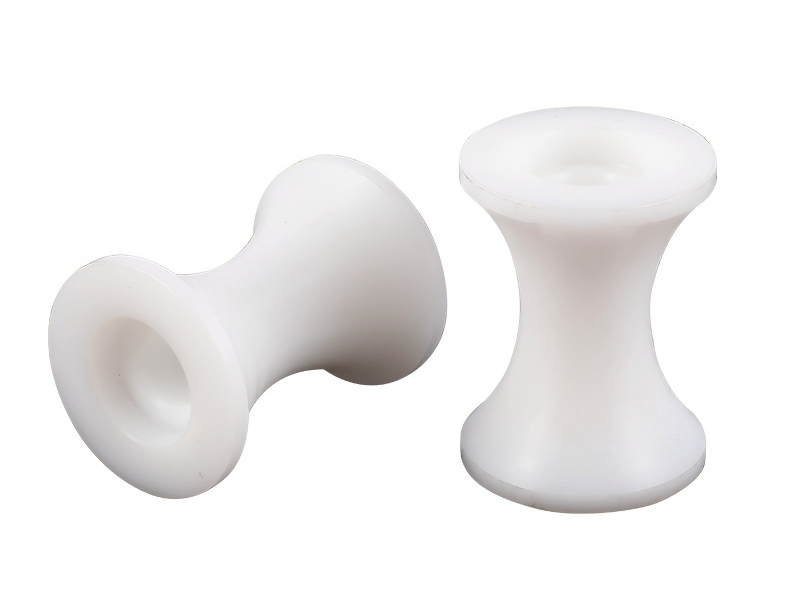CNC Turning of Plastic Components for Consumer Products with Complex Geometries
Introduction
The Consumer Products industry increasingly demands intricately designed plastic components featuring complex geometries, precision dimensions, and superior aesthetics. Plastics, known for their excellent machinability, lightweight properties, durability, and versatile characteristics, are widely used in products such as household appliances, electronics enclosures, personal care devices, and toys.
High-precision CNC turning services are critical in manufacturing these intricate plastic components. CNC turning enables the consistent production of complex shapes, tight tolerances, smooth surface finishes, and detailed features essential for consumer products requiring precise form and function.
Plastic Materials
Material Performance Comparison
Plastic Material | Tensile Strength (MPa) | Flexural Modulus (GPa) | Heat Resistance (°C) | Typical Applications | Advantage |
|---|---|---|---|---|---|
40-50 | 2.1-2.4 | 80-95 | Appliance parts, electronics cases | Excellent machinability, high impact resistance | |
55-70 | 2.2-2.5 | 120-130 | Clear protective covers, lenses | High impact strength, superior optical clarity | |
60-70 | 2.5-3.0 | 90-110 | Precision gears, moving parts | Excellent dimensional stability, wear resistance | |
70-85 | 1.8-3.4 | 120-160 | Mechanical components, connectors | High mechanical strength, good thermal resistance |
Material Selection Strategy
Choosing the appropriate plastic material for complex consumer product components depends on specific application and performance needs:
General-purpose and high-impact strength products: ABS is ideal for easy machining and resilience.
Components requiring high transparency and toughness: Polycarbonate (PC) provides exceptional clarity and strength.
Precision mechanical parts demanding high dimensional accuracy: Acetal (POM) offers superb dimensional stability and excellent wear characteristics.
Durable mechanical components requiring strength and temperature resistance: Nylon (PA) is highly recommended.
CNC Turning Processes
Process Performance Comparison
CNC Turning Technology | Dimensional Accuracy (mm) | Surface Roughness (Ra μm) | Typical Applications | Key Advantages |
|---|---|---|---|---|
±0.005-0.015 | 0.4-0.8 | Precise plastic fittings, connectors | Tight dimensional control, smooth surfaces | |
±0.005-0.02 | 0.6-1.2 | Complex housings, intricate parts | Efficient production of intricate geometries | |
±0.01 | 0.8-1.6 | General plastic components | Optimized plastic machining, cost-effective solutions | |
±0.002-0.01 | 0.2-0.4 | Precision sealing components, optical elements | Ultra-precise surface finish, superior accuracy |
Process Selection Strategy
Selecting optimal CNC turning technology for plastic components involves balancing geometric complexity, required precision, and production efficiency:
Precision fittings and connectors: Precision CNC Turning delivers tight tolerances and superior surface finishes.
Components with intricate and complex geometries: Multi-Axis CNC Turning is ideal for reducing setups and ensuring dimensional accuracy.
Standard plastic parts with moderate complexity: Plastic CNC Machining offers specialized tooling and efficient production.
Components demanding extremely high surface precision: CNC Grinding Service ensures the smoothest finishes and exact dimensions.
Surface Treatment
Surface Treatment Performance
Treatment Method | Aesthetic Improvement | Wear Resistance | Heat Stability (°C) | Typical Applications | Key Features |
|---|---|---|---|---|---|
Excellent (customizable colors) | Moderate | Up to 100 | Electronics casings, appliance panels | Extensive aesthetic options, protective finish | |
Superior gloss and durability | Moderate-High | Up to 120 | Display bezels, device casings | High-gloss finish, fast curing, scratch resistance | |
High (mirror-like clarity) | Moderate | Up to 90 | Transparent covers, lenses | Enhanced clarity, smooth surface appearance | |
Good (matte finishes) | Moderate | Up to 110 | Ergonomic grips, aesthetic casings | Uniform matte finish, improved tactile feel |
Surface Treatment Selection
Surface treatment strategies depend on consumer product requirements for appearance and functionality:
Exterior product housings and aesthetic covers: Painting or UV Coating provides customizable finishes and durability.
Transparent or optical components: Polishing ensures maximum clarity and visual appeal.
Ergonomic and tactile product components: Texturing (Sandblasting) improves user grip and visual consistency.
Quality Control
Quality Control Procedures
Dimensional inspections using advanced Coordinate Measuring Machines (CMM) and optical measurement tools.
Surface roughness validation via precision profilometry.
Material testing (tensile, flexural modulus) according to ASTM and ISO standards.
Visual inspection for surface quality, ensuring defect-free finishes.
Thermal and mechanical testing for product reliability.
Detailed documentation and traceability complying with ISO 9001 standards for consistent quality management.
Industry Applications
CNC-Turned Plastic Applications
Complex electronic enclosures and casings for consumer devices.
Precision components for household appliances and personal care products.
Durable plastic connectors, fittings, and mechanical assemblies.
Intricate components for toys and leisure products.
Related FAQs:
Why is CNC turning ideal for plastic components with complex geometries?
Which plastic material is best for precision consumer products?
How does multi-axis CNC turning simplify production of intricate plastic parts?
What surface treatments enhance the aesthetics of CNC-turned plastic components?
What quality controls are necessary for CNC-turned plastic components used in consumer products?

